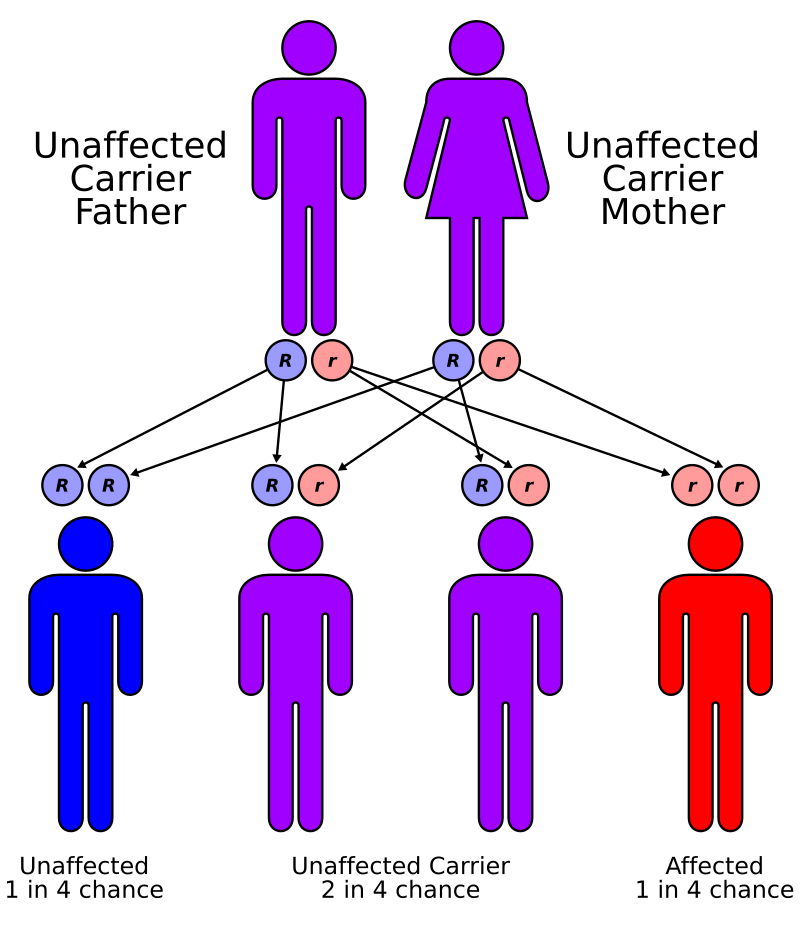 |
| DNA structure |
The second lesson was all about DNA replication and how it occurs. Semi-conservative DNA replication is the process of creating two identical strands of DNA from one strand. The two strands end up with half of the original strand. All of this happens in 2 steps: Unzipping and Matching. In unzipping, the enzyme helicase unzips the DNA by breaking the hydrogen bonds that hold the nitrogen bases together. In matching, the enzyme DNA polymerase adds the matching nucleotides(with bases) to each strand. This results in two DNA molecules that are identical to the original strand.
 |
| DNA replication |
https://upload.wikimedia.org/wikipedia/commons/5/50/0323_DNA_Replication.jpg
Lesson three focused on DNA, RNA and proteins, and how important these substances are to our body. There are some structural differences between RNA and DNA. RNA, unlike DNA, is single stranded, has ribose instead of deoxyribose sugars, and it contains uracil instead of a thymine base. RNA serves as a blueprint, or temporary copy of DNA, the master copy. RNA delivers the gene copy to the ribosomes, where it is used to make proteins.Transcription in the nucleus is the process where RNA polymerase reads and copies the DNA code(gene) for a protein as an mRNA copy. In transcription, the DNA unzips, the RNA polymerase matches a spare nucleotide to make an RNA strand(with U instead of T). Messenger RNA or mRNA is produced and it leaves the nucleus for the cytoplasm. In translation, mRNA arrives at the ribosome where it reads mRNA 3 bases at a time and translates DNA language (nucleotides: A, C, G, U) into protein language(amino acids). Each 3 base sequence is known as a codon, that codes for one amino acid. There are "start" and "stop" codons so ribosomes know when to translate. Translation results in long chains of amino acids or primary structures to be formed. That chain then folds and combines with other chains to become a protein. All in all, the steps from DNA to protein are as shown: The DNA sequence is transcribed into RNA with the different base pairs. Then codons are identified and translated into amino acids, where a protein sequence is created.
 |
| DNA to Protein digram |
https://upload.wikimedia.org/wikipedia/commons/f/f2/0324_DNA_Translation_and_Codons.jpg
The fourth lesson was about the different types of mutations (change in DNA code) and mutagens (factors that cause mutations). Point mutations occur at a single point in the DNA sequence, and it includes substituion where a nucleotide is substituted for another, and frameshift mutations with insertion and deletion(of single bases), that shifts how the entire sequence is read. Some other types of mutations include inversion, where DNA breaks off and bonds in reverse order, as well as translocation, where part of a chromosome breaks off and bonds with another chromosome. Mutations that change the protein a lot are more harmful, whereas a mutation that has little effect on a protein has little harm.
The last lesson was about gene expression and regulation. Gene expression is the process of a gene being used to produce a phenotype or gene product and gene regulation is a mechanism used by the cell to increase or decrease the expression of a gene. Because every cell in your body has the same DNA, gene expression is required to turn off/on the genes that aren't needed. This creates specialized functions for different cells. Gene regulation is needed so cells don't waste energy overexpressing genes. There is a variety of steps to control gene expression, and the series of genes used to control the expression of a single gene is called the operon. The promoter is the location on DNA where RNA polymerase attaches. The operator is the switch or segment of DNA at the start of the gene that prevents or allows RNA polymerase(transcription) to attach and read the gene.The repressors affect the DNA's binding ability whether the gene is present or absent. A good example is the Lac operon, for bacteria, because eukaryotic regulation is much more complicated.
I feel like at first, I struggled to grasp some of the more complex concepts, but after reviewing to write this reflection, I feel like a lot of it came into place. Throughout the unit, I was doing really well remembering the broader outline of each lesson, which I think adds to my understanding. Personally, I want to learn about how some of these processes occur in more detail as to where the materials come from(like in DNA replication). I wonder what all of it looks like, but after watching the videos in the vodcasts, I have a better idea for it. I also want to learn more about how all of these things come together, in a visual representation, which I think will be a great tool for studying.
Overall, I feel like I have grown as a student. Looking at all of my other reflections, my classroom-based skills have definitely improved, as well as my mental awareness. After learning about mindfulness and the growth mindset, I've been increasing applying my effort and energy in a non-exhausting way, as well as accepting and learning from my mistakes. One of the biggest thingsI have gained from this, is how I am adjusting my study habits. After discovering I was a multimodal learning in the last unit, I've learned to study more actively and in different ways. Also, throughout the labs we did in this unit, I feel like I've been a better critical thinker as well.





